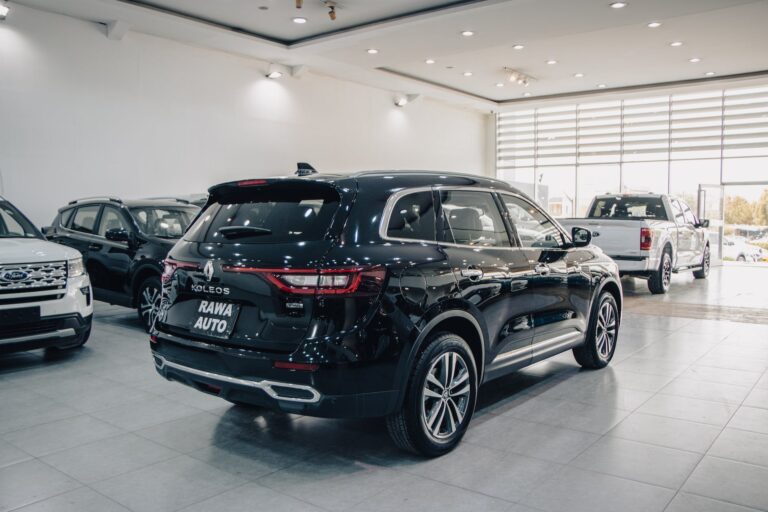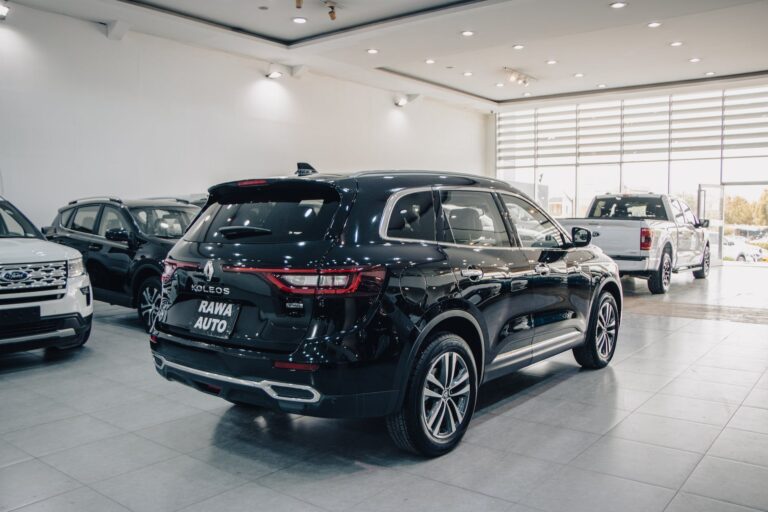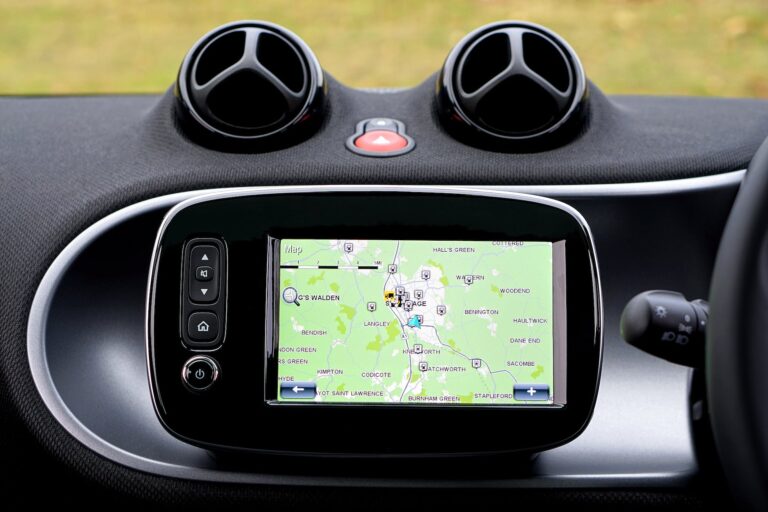The Power of Social Media Marketing for Car Dealers
In today’s digital landscape, social media marketing has become an indispensable tool for car dealers looking to expand their online presence and reach a wider audience. With billions of users actively engaged on various social media platforms, leveraging these channels can significantly impact a car dealer’s success. Let’s explore why social media marketing matters for car dealers and the benefits it brings.
Why Social Media Marketing Matters for Car Dealers
Social media marketing matters for car dealers because it provides a direct line of communication with potential customers. By utilizing platforms such as Facebook, Instagram, and Twitter, car dealers can establish an online presence that allows them to connect with their target audience on a personal level.
Through social media, car dealers can showcase their inventory, promote special offers, and engage with customers in real time. The ability to share visual content, videos, and customer testimonials creates a dynamic and engaging environment that can influence purchasing decisions.
Social media also allows car dealers to build brand awareness. By consistently posting relevant and valuable content, dealers can establish themselves as experts in the industry and gain the trust of their audience. This can lead to increased brand recognition, customer loyalty, and ultimately, more sales.
Benefits of Social Media Marketing
The benefits of social media marketing for car dealers are numerous. Here are a few key advantages:
-
Increased Reach: Social media platforms provide a vast audience reach, allowing car dealers to connect with potential customers beyond their local area. By targeting specific demographics and utilizing paid advertising features, dealers can increase their visibility and attract new leads.
-
Cost-Effective: Compared to traditional advertising methods, social media marketing is often more cost-effective. With various advertising options available, dealers can allocate their budget strategically, reaching a larger audience without breaking the bank.
-
Improved Customer Engagement: Social media platforms offer a unique opportunity for car dealers to engage directly with their audience. By responding to comments, messages, and reviews, dealers can build relationships, address customer concerns, and provide exceptional customer service.
-
Insights and Analytics: Social media platforms provide valuable insights and analytics that allow car dealers to track the performance of their marketing efforts. By analyzing data such as reach, engagement, and conversion rates, dealers can make data-driven decisions to optimize their strategies and maximize their return on investment.
-
Competitive Advantage: In a competitive industry, social media marketing can give car dealers a competitive edge. By staying active on social media, dealers can stay top-of-mind with their audience, outshine competitors, and position themselves as leaders in the market.
By embracing social media marketing, car dealers can harness the power of these platforms to connect with their target audience, build brand awareness, and drive business growth. It’s important to develop a comprehensive social media strategy that includes identifying the target audience, setting clear goals, and selecting the right platforms to achieve success. For more insights on automotive marketing strategies, check out our articles on automotive content marketing and automotive video marketing.
Building Your Social Media Strategy
To effectively harness the power of social media marketing for your car dealership, it’s crucial to develop a well-defined social media strategy. This strategy will guide your actions and help you achieve your marketing goals. In this section, we will explore three key components of building a successful social media strategy: identifying your target audience, setting clear goals and objectives, and choosing the right social media platforms.
Identifying Your Target Audience
Before diving into social media marketing, it’s essential to understand who your target audience is. Identifying your target audience allows you to tailor your content and messages to resonate with the right people. Consider factors such as demographics, interests, and behaviors. Are you targeting young professionals looking for fuel-efficient cars, families in need of spacious SUVs, or luxury car enthusiasts seeking high-end vehicles?
By defining your target audience, you can create content that appeals to their specific needs and preferences. This targeted approach ensures that your social media efforts are reaching the right people, maximizing your chances of engaging potential customers.
Setting Clear Goals and Objectives
Setting clear goals and objectives is crucial for any successful social media marketing strategy. Determine what you hope to achieve through your social media efforts. Are you aiming to increase brand awareness, generate leads, drive website traffic, or boost sales? Establishing specific, measurable, attainable, relevant, and time-bound (SMART) goals gives you clarity and helps you track your progress.
For example, a goal could be to increase website traffic by 20% within three months. By setting clear objectives, you can create content and implement strategies that align with these goals, ensuring that your social media efforts are driving the desired outcomes.
Choosing the Right Social Media Platforms
To effectively reach your target audience, it’s important to choose the right social media platforms. Not all platforms are created equal, and each has its own strengths and characteristics. Consider the demographics of your target audience and the features of different platforms to make informed decisions.
For instance, Facebook is a popular choice for car dealerships due to its wide user base and robust advertising capabilities. Instagram is great for visually showcasing your inventory and engaging with younger audiences. LinkedIn can be effective for targeting professionals and B2B networking. Research the platforms that align with your target audience and objectives to make the most of your social media marketing efforts.
| Social Media Platform | Key Features | Target Audience |
|---|---|---|
| Wide user base, advertising capabilities | General audience | |
| Visual content, engagement features | Younger audience, visually-oriented | |
| Professional networking, B2B opportunities | Professionals, businesses |
By identifying your target audience, setting clear goals, and choosing the right social media platforms, you can lay a strong foundation for your social media marketing strategy. These components will guide your content creation, engagement strategies, and advertising efforts, allowing you to connect with potential customers effectively. Remember to regularly evaluate and refine your strategy based on the results and feedback you receive to ensure ongoing success.
Creating Engaging Content
To effectively utilize social media for marketing, car dealers need to focus on creating engaging content that resonates with their audience. By showcasing their inventory, sharing testimonials and reviews, and providing helpful tips and advice, car dealers can capture the attention of potential customers and build trust and credibility.
Showcasing Your Inventory
One of the primary ways car dealers can engage their audience is by showcasing their inventory on social media. This allows potential customers to get a glimpse of the cars available and helps generate interest and desire. Car dealers can share high-quality images and videos of their vehicles, highlighting their unique features and benefits. Additionally, including relevant details such as price, mileage, and specifications can assist potential buyers in making informed decisions.
By consistently updating their social media platforms with new inventory and enticing visuals, car dealers can create excitement and anticipation among their followers. This strategy not only increases brand visibility but also drives traffic to their website or dealership. To optimize the presentation of inventory, car dealers can leverage car dealer website templates that provide an attractive and user-friendly interface for showcasing their vehicles.
Sharing Testimonials and Reviews
Social proof plays a crucial role in influencing purchasing decisions. Car dealers can leverage the power of testimonials and reviews by sharing customer experiences on their social media platforms. Positive feedback and stories from satisfied customers can build trust and credibility, encouraging potential buyers to consider their dealership. Car dealers can feature testimonials in various formats, such as text posts, images, or even video interviews. By highlighting real-life experiences, car dealers can connect with their audience emotionally and demonstrate the value they provide.
To effectively manage and integrate customer testimonials and reviews into their website and marketing efforts, car dealers can utilize dealer website development services that offer seamless integration and easy management of customer feedback.
Providing Helpful Tips and Advice
Beyond showcasing inventory and testimonials, car dealers can engage their audience by providing helpful tips and advice related to car buying, maintenance, and other automotive topics. By sharing valuable content, such as how-to guides, maintenance tips, or advice on choosing the right car, car dealers position themselves as trusted authorities in the industry. This not only helps to establish their expertise but also keeps their audience engaged and interested in their social media content.
Car dealers can also consider incorporating automotive content marketing strategies, such as blog posts, articles, or infographics, to provide more in-depth information on various automotive topics. Linking these informative pieces of content back to their website can drive traffic and increase the chances of conversion.
By creating engaging content that showcases their inventory, shares testimonials and reviews, and provides helpful tips and advice, car dealers can effectively leverage social media to connect with their audience, build trust, and ultimately drive more sales.
Leveraging Social Media Advertising
To maximize your social media marketing efforts as a car dealer, it’s important to leverage the power of social media advertising. This allows you to reach a wider audience, target specific demographics, and drive more traffic to your dealership. In this section, we will explore some effective social media advertising strategies for car dealers.
Targeted Ad Campaigns
One of the key advantages of social media advertising is the ability to create targeted ad campaigns. Platforms like Facebook, Instagram, and Twitter offer advanced targeting options that allow you to define your ideal audience based on factors such as location, age, interests, and even car ownership history. By reaching the right people with your ads, you can increase the chances of generating quality leads and conversions.
When setting up targeted ad campaigns, it’s important to have a clear understanding of your target audience. Who are your potential customers? What are their interests and preferences? By identifying these factors, you can tailor your ad content to resonate with your audience and increase the effectiveness of your campaigns.
Promoted Posts and Sponsored Content
Another effective social media advertising strategy is to utilize promoted posts and sponsored content. Promoted posts allow you to boost the visibility of your organic social media content by reaching a wider audience. This can be particularly useful when you have important announcements, special offers, or new inventory to showcase.
Sponsored content, on the other hand, involves collaborating with influencers or content creators to promote your dealership or specific vehicles. By leveraging their existing audience and influence, sponsored content can help you reach potential customers who may not have been aware of your dealership before.
When implementing promoted posts and sponsored content, it’s important to choose the right social media platforms based on your target audience and marketing goals. Each platform has its own strengths and user demographics, so consider factors such as user engagement, ad formats, and targeting capabilities when making your choices. For more information on choosing the right social media platforms, check out our article on car dealer website templates.
Retargeting Strategies
Retargeting is a powerful social media advertising technique that allows you to reconnect with people who have previously visited your website or engaged with your social media content. By placing a tracking pixel on your website, you can track users’ actions and display targeted ads to them when they browse social media platforms.
Retargeting ads can be highly effective in reminding potential customers about your dealership and vehicles they may have shown interest in. This can help to keep your brand top of mind and increase the chances of converting those leads into actual sales.
When implementing retargeting strategies, it’s important to strike a balance between frequency and relevance. While you want to remind users about your dealership, bombarding them with excessive ads can lead to ad fatigue and negative user experiences. By using frequency capping and ensuring that your retargeting ads are tailored to the users’ interests, you can increase the effectiveness of your retargeting campaigns.
By utilizing targeted ad campaigns, promoted posts and sponsored content, and retargeting strategies, you can leverage social media advertising to its full potential as a car dealer. Remember to monitor the performance of your ads, make adjustments as needed, and always strive to provide valuable and engaging content to your audience.
Engaging with Your Audience
Engaging with your audience is a vital component of a successful social media marketing strategy for car dealers. By actively responding to comments and messages, hosting Q&A sessions and live videos, and encouraging user-generated content, you can foster a strong and loyal community of followers. This section will delve into these engagement strategies in more detail.
Responding to Comments and Messages
When your audience engages with your social media posts by leaving comments or sending messages, it’s crucial to respond in a timely and professional manner. Promptly addressing their inquiries, concerns, or compliments shows that you value their feedback and are committed to providing excellent customer service. It also helps to build trust and credibility with your audience.
Make it a priority to monitor your social media platforms regularly. Responding to comments and messages should be done in a polite and helpful manner, addressing any questions or issues raised. By engaging in meaningful conversations with your audience, you can establish a positive brand image and strengthen customer relationships.
Hosting Q&A Sessions and Live Videos
Hosting live question and answer (Q&A) sessions and videos on social media platforms is an effective way to directly engage with your audience. This interactive format allows you to address frequently asked questions, provide expert advice, and showcase your expertise in the automotive industry. It also gives your audience the opportunity to connect with you in real-time and feel more involved with your dealership.
During Q&A sessions and live videos, encourage your audience to ask questions related to car buying, maintenance, or any other relevant topics. Respond to their questions on the spot, providing valuable insights and actionable advice. This engagement technique not only helps to educate your audience but also positions you as a knowledgeable and trustworthy resource in the industry.
Building Community and Encouraging User-Generated Content
Building a sense of community among your social media followers is an effective way to foster engagement and loyalty. Encourage your audience to share their experiences, stories, and photos related to their car purchases or visits to your dealership. You can create specific hashtags related to your dealership or events to collect and showcase user-generated content.
By featuring user-generated content on your social media platforms, you not only highlight your satisfied customers but also demonstrate the positive experiences others have had with your dealership. This encourages more individuals to engage with your brand and share their own stories. It’s important to ask for permission before reposting user-generated content and give proper credit to the original creators.
Engaging with your audience through comments and messages, hosting live Q&A sessions and videos, and encouraging user-generated content are effective strategies for building strong connections with your social media followers. Remember to monitor your platforms regularly, respond promptly and professionally, and create a welcoming community that encourages active participation.







